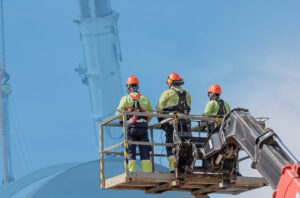Statistics show that around 250 people die each year as a result of accidental drowning in the UK’s inland waters including rivers, canals, harbours, lakes, etc. Almost a quarter of these cases occurred at enclosed waters such as lakes, quarries and reservoirs.
If you are responsible for a body of water, land alongside a body of water, or you carry outwork on or alongside water sources, then it is important that you take suitable precautions to prevent accidents.
Exactly what precautions will be required will depend on the particular circumstances, but the first stage will always be to assess the risks. A standard five step approach to assessing risks is:
- Identify the hazards – e.g. paths in poor condition, deep fast flowing water, underwater obstructions etc
- Consider who might be harmed – e.g. members of the public, trespassers, employees, visitors etc
- Evaluate the risks – look at what you are doing already and decide whether there are other practical steps you could take
- Record your significant findings – and act on them
- Regularly review your assessment – few things stay the same so regularly check for any changes
In association with the Royal Lifesaving Society, ROSPA (The Royal Society for the Prevention of Accidents) have published a new guide to managing safety at inland waters. The guide is aimed at anyone with responsibility for land adjoining inland waters and can be downloaded from ROSPA’s website at: www.rospa.com/SafetyAtInlandWaters
The guide is split into six chapters covering:
- Water related risks;
- The legal case;
- Guiding principles for managing risk;
- Planning for water safety;
- Assessing and managing risk; and
- Visitor information and campaigns.
Please speak to your normal PIB Risk Management contact if you have any questions regarding managing water safety hazards at your premises.

New rules for providers of social housing in England

Small but mighty – working safely with nanomaterials

Do you have a MEWP rescue plan?

Changing the asbestos control regime

HSE Launch Motor Vehicle Paint Spraying Campaign
